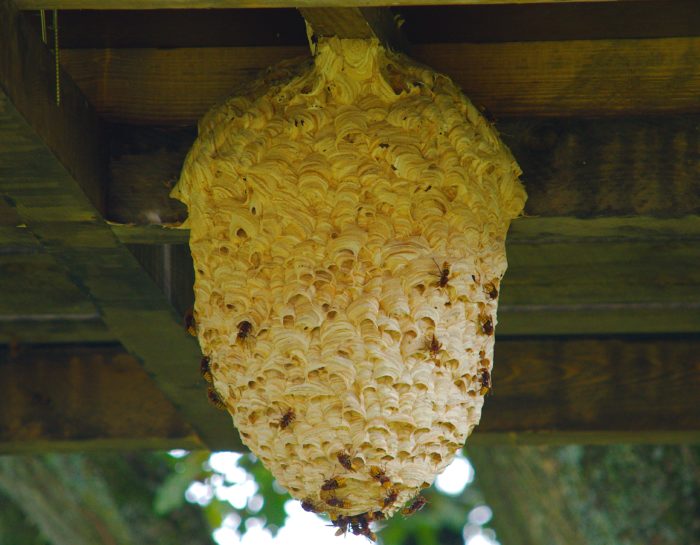What are the main similarities between bees and wasps? These stinging insects both aroused people’s fear and concern about their presence and especially risked their health and safety if they were stung.
The question is, do they eat the same thing? What danger do they carry? What should you pay attention to?
Know the Difference
 Bees are often found near plants or flowers because they are pollinators. They rarely sting and are not too dangerous for humans. How do you know if it’s a bee that flies near you? Look for their hairy body and flat feet. Of the many species of bees that are common in Indonesia, carpenter bees are considered one of the most destructive, because of their habit of seeping on wood to raise their children.
Bees are often found near plants or flowers because they are pollinators. They rarely sting and are not too dangerous for humans. How do you know if it’s a bee that flies near you? Look for their hairy body and flat feet. Of the many species of bees that are common in Indonesia, carpenter bees are considered one of the most destructive, because of their habit of seeping on wood to raise their children.
Learn the initial steps to identify the efficacy of a potential bee like a honeycomb, a smooth round hole made on your structure (by Carpenter Bees).
Wasps, on the other hand, are predatory animals and eat other insects. Slim and small in body structures with a more shiny appearance, they can be aggressive and dangerous because they cause allergic reactions or life-threatening conditions. Besides, wasp colonies are known to be socially based. They experience the process of reproduction, to build nests for the queen.
Apart from the differences that are visible from the outside, wasps can repeatedly sting (this is because they have no stings or thorns) and they do not swarm like bees. So, what’s the difference between wasps and wasps? The wasp colonies are much larger, their nests are gray, shaped like paper and are often found in heights like on tree branches, and they don’t like sweet consumption.
Call a Professional Pest Control
Since bees are very beneficial to the environment, they should only be controlled when they pose a threat directly to your home or family.
When you want to get rid of bees and wasps, we strongly encourage you to contact a pest control professional if you have a bee and wasp infestation. If you try to release a honeycomb or wasp’s own nest can be dangerous, especially if you or someone in your family has an allergy to stings.
Prevent Future Infestation
 Bees can enter buildings or objects that have a quarter inch or more massive hole. And once a scout bee finds an ideal place, it will inform its colonies to move there. Therefore, you have to monitor all the gaps and openings that have the potential for any insects to nest.
Bees can enter buildings or objects that have a quarter inch or more massive hole. And once a scout bee finds an ideal place, it will inform its colonies to move there. Therefore, you have to monitor all the gaps and openings that have the potential for any insects to nest.
Maintaining cleanliness can prevent bees from nesting in your yard. Unused equipment can attract honey bees because it can provide sufficient protection for the nest.
If you have ever had a bee colony nesting at your home, you have to clear any traces of honeycomb there completely. It has pheromones that can attract newcomers.








